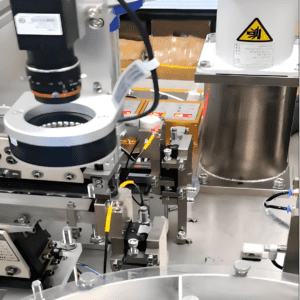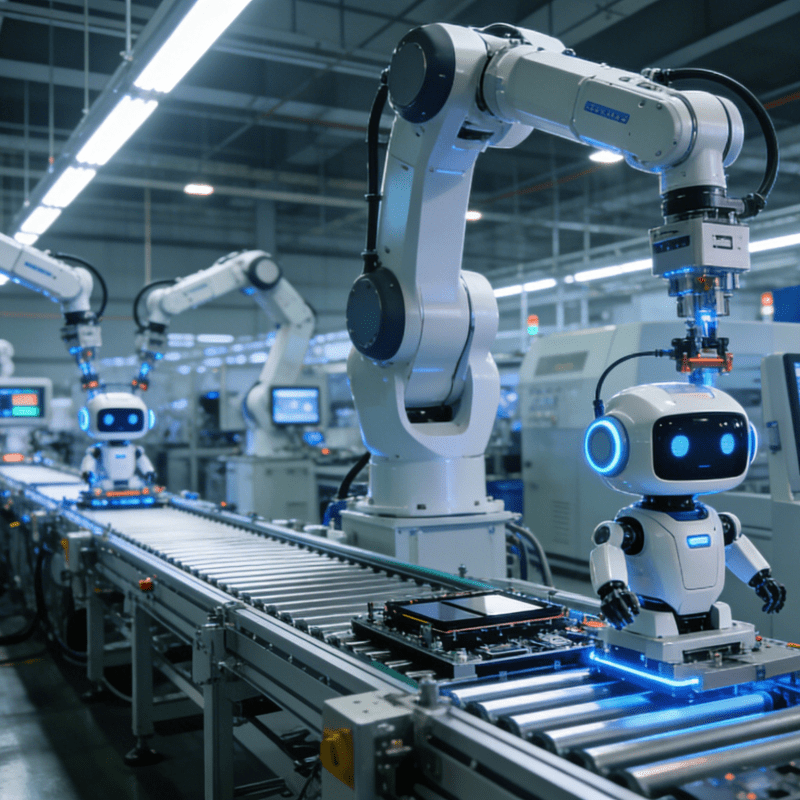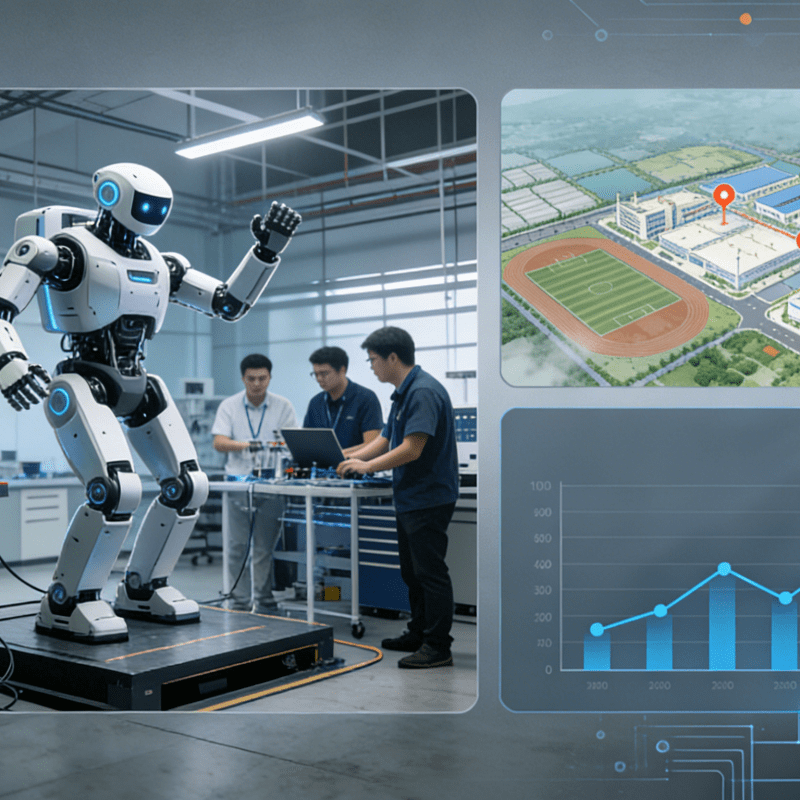
In the field of mechanical manufacturing, the stable operation of many core components relies on the precise coordination of “rotation and rotation stop” — from the gear sets of automobile transmissions to the shafting structures of industrial motors, from the transmission components of precision instruments to the driving devices of household appliances, all require specific structures to achieve the function of “rotating when necessary and stopping when critical”. The Rotation Stop Assembly Machine is an automated equipment designed for such needs. It uses intelligent technology to break through the precision bottleneck in the assembly of traditional rotation-stop structures, becoming a key device in the field of high-end manufacturing to ensure the stability of mechanical systems.
Core Function: Taking “Rotation Stop” from “Qualified” to “Precise”
The core mission of the Rotation Stop Assembly Machine is to realize the automated and high-precision assembly of mechanical components with rotation-stop functions. Such components usually consist of two parts: “rotating parts” and “rotation-stop parts”. The former may be shafts, gears, or sleeves, while the latter are mostly keys, pins, positioning blocks, and other elements used to limit relative rotation. The matching accuracy of the two directly determines the operational stability and service life of the entire mechanical system.
Traditional manual operations or general assembly equipment often face three major problems when handling such components: first, the alignment error of rotation-stop features (such as keyways and positioning holes), which easily leads to component jamming or excessive gaps after assembly; second, the uneven assembly force of rotation-stop elements (such as set screws and elastic pins), which may cause loosening or excessive deformation; third, poor consistency in mass production, which is difficult to meet the strict standards of high-end manufacturing.
The Rotation Stop Assembly Machine solves these pain points through three core technological breakthroughs: a high-precision visual positioning system can identify the micro-features of rotating parts and rotation-stop parts, controlling the alignment error within ±0.01mm; an adaptive force-controlled assembly module can automatically adjust the press-fitting or tightening force according to different materials (metal, engineering plastics, etc.), ensuring that rotation-stop elements are both firm and undamaged; the full-process data traceability function records the assembly parameters of each component, providing a traceable basis for quality control.
Technical Core: Four Systems Building a “Rotation-Stop” Precision Moat
The precision of the Rotation Stop Assembly Machine comes from four core systems working in synergy, which together form a full-closed-loop assembly system from part recognition to final inspection:
Visual recognition and positioning system: Through high-resolution industrial cameras and AI image algorithms, it accurately captures the rotation-stop marks (such as keyways, flat positions, special-shaped structures) on rotating parts and the installation benchmarks of rotation-stop parts. Even when parts have slight deformation or surface oil stains, it can still achieve sub-pixel-level feature matching, providing a “coordinate benchmark” for subsequent assembly.
Multi-axis linkage execution system: Equipped with high-precision servo motors and ball screw modules, it drives the robotic arm or assembly tooling to complete the coherent actions of “grabbing rotating parts – feeding rotation-stop parts – precise alignment of the two – press-fitting / tightening”. Its motion repeat positioning accuracy can reach ±0.005mm, ensuring that rotation-stop elements can be perfectly embedded in preset positions.
Intelligent force control and feedback system: Built-in pressure sensors and torque sensors monitor the force changes during the assembly process in real time. For example, when assembling keyways and flat keys, the system will automatically adjust the press-fitting speed according to the preset force curve — slow approach in the contact phase, uniform force application in the fitting phase, and immediate pressure holding after reaching the position to avoid overshoot damage to parts.
Online detection and sorting system: After assembly, the equipment immediately inspects the components through a laser profiler or torque tester, judges key indicators such as rotation-stop gaps, assembly depth, and torsional strength, automatically screens out unqualified products, and triggers parameter correction instructions, realizing a real-time closed loop of “assembly – inspection – optimization”.
Typical Applications: From Automotive Core Components to Precision Instruments
The application scenarios of the Rotation Stop Assembly Machine cover almost all mechanical manufacturing fields that require “rotation-stop” functions, especially showing irreplaceable value in industries with extremely high requirements for precision and reliability:
In automobile manufacturing, it is used for the rotation-stop assembly of transmission input shafts and synchronizers — by accurately positioning the splines on the shaft and the rotation-stop pins of the synchronizer, it ensures that there is no relative sliding between the two during gear shifting, avoiding interruption of power transmission; in the assembly of engine camshafts and timing gears, the equipment can control the tightening torque error of rotation-stop bolts within ±3%, ensuring the accuracy of valve timing.
In the field of industrial motors, the equipment is responsible for the assembly of rotation-stop structures between motor shafts and rotor cores. For new energy vehicle drive motors, even a rotation-stop gap of 0.1mm may cause vibration and noise during high-speed operation, while the Rotation Stop Assembly Machine can control such errors below 0.02mm, significantly improving motor efficiency and service life.
In precision instrument manufacturing, it can complete the assembly of rotation-stop components for optical lens focusing mechanisms. Through micro-force control technology (minimum controllable force up to 0.1N), the elastic rotation-stop ring is accurately embedded between the lens sleeve and the focusing ring, achieving the function of “rotatable during focusing and no loosening after fixing” without damaging precision optical components.
Value Reconstruction: From “Assembly Tool” to “Manufacturing Hub”
The emergence of the Rotation Stop Assembly Machine is not only an equipment upgrade in the assembly link but also promotes a profound transformation in mechanical manufacturing modes. For production enterprises, its value is reflected in three dimensions:
Quality dimension: It reduces the defect rate of rotation-stop components from 1-2% in traditional processes to below 0.1%, greatly reducing 整机 failures caused by rotation-stop failures, especially in safety-sensitive fields such as automobiles and aviation, directly reducing after-sales risks and recall costs.
Efficiency dimension: A single device can complete the assembly of 300-500 sets of components per hour, which is 8-10 times the manual efficiency, and can run continuously for 24 hours, significantly shortening the product production cycle.
Flexibility dimension: Through parameterized programming, the same device can quickly switch to the assembly mode of rotation-stop components of different specifications. For example, in an auto parts factory, by adjusting the visual recognition parameters and force control curves, it can switch from assembling the rotation-stop key of a certain type of motor shaft to assembling the rotation-stop pin of a transmission gear, adapting to the production needs of multiple varieties and small batches.
With the in-depth advancement of intelligent manufacturing, the Rotation Stop Assembly Machine is evolving from a “single assembly equipment” to an “intelligent production unit” — by connecting with the MES system, it can automatically receive production plans, feed back real-time data, and optimize assembly parameters, becoming a key node connecting the design end and the manufacturing end. In the era of high-end manufacturing pursuing “zero defects”, this precision equipment focusing on “rotation-stop” details is supporting the great stability of mechanical systems with “small but beautiful” technological breakthroughs.




















